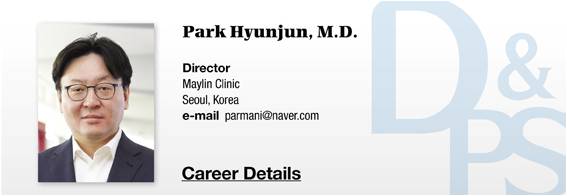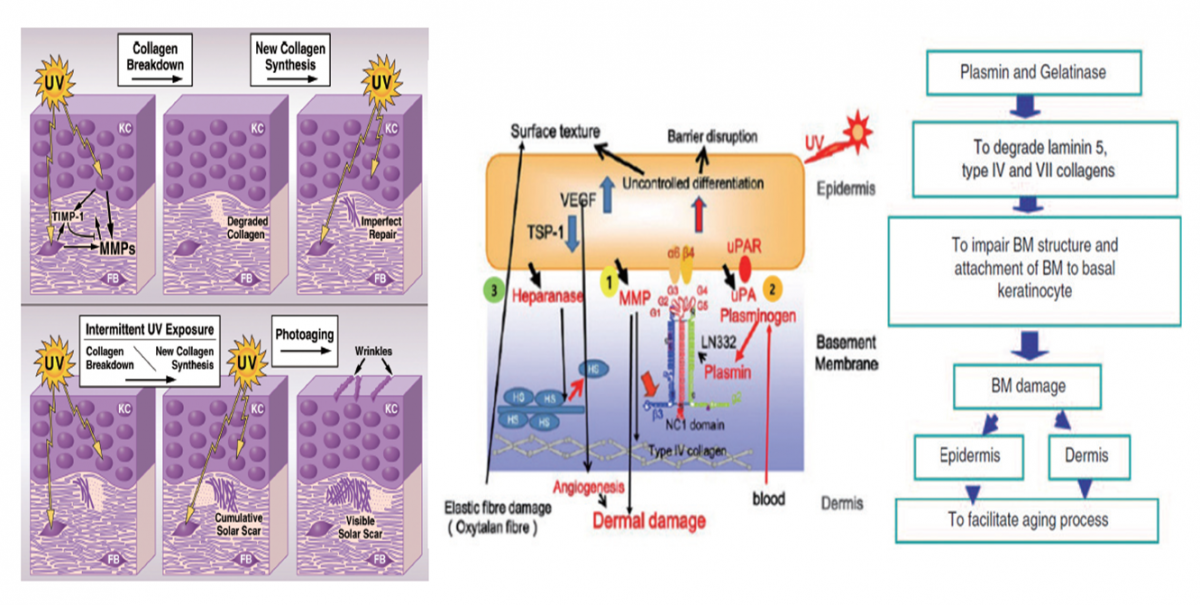
▶ Previous Artlcle: #1-2. Overview of Skin Booster
<Fibroblast Function>
Biochemical processes
Energy generation
Resisting the effects of oxidative stress
.jpg)
[Advertisement] FCR® (Fractional Prickle CoralCalcium Regentron) – Manufacturer: (www.illglobal.com)]
If fibroblasts which have an important role in the skin become damaged or if the aging process goes on, the number of fibroblasts will decrease and their function will deteriorate, slowing the biosynthetic activities of collagens, hyaluronic acids and other extracellular matrix (ECM) proteins.
On the other hand, the production of the enzymes working to destroy collagens increases, accelerating skin aging and damage.
Also, fibroblasts collapse with the loss of mechanical tension with the ECM around them (Figure 3).
In this process, a decrease in cell to cell interactions with neighboring tissues results in the further progression of skin aging (Figure 4).
The main function of skin rejuvenation boosters is to enhance the overall condition of the aging and damaged skin by providing them with therapeutic substrates for the purpose of restoring the normal function of fibroblasts in the dermis and ensuring an effective paracrine cross-talk between fibroblast and neighboring ECM cells.
From this aspect, a paracrine cross-talk not only between other cells in the dermis and fibroblast but also between keratinocyte and fibroblast play a crucial role with respect to skin aging.

Figure 4. A. Tandara AA, Mustoe TA. MMP-and TIMP-secretion by human cutaneous eratinocyte and fibroblast impact of coculture and hydration. J Plastreconsr Aesthe Surg. 2011; 64(1): 108-116. B. Satoshi Amano, Possible Involvement of Basement Membrane Damage in Skin Photoaging. Journal of Investigative Dermatology Symposium Proceedings(2009) 14; 2–7.
-To be continued



















